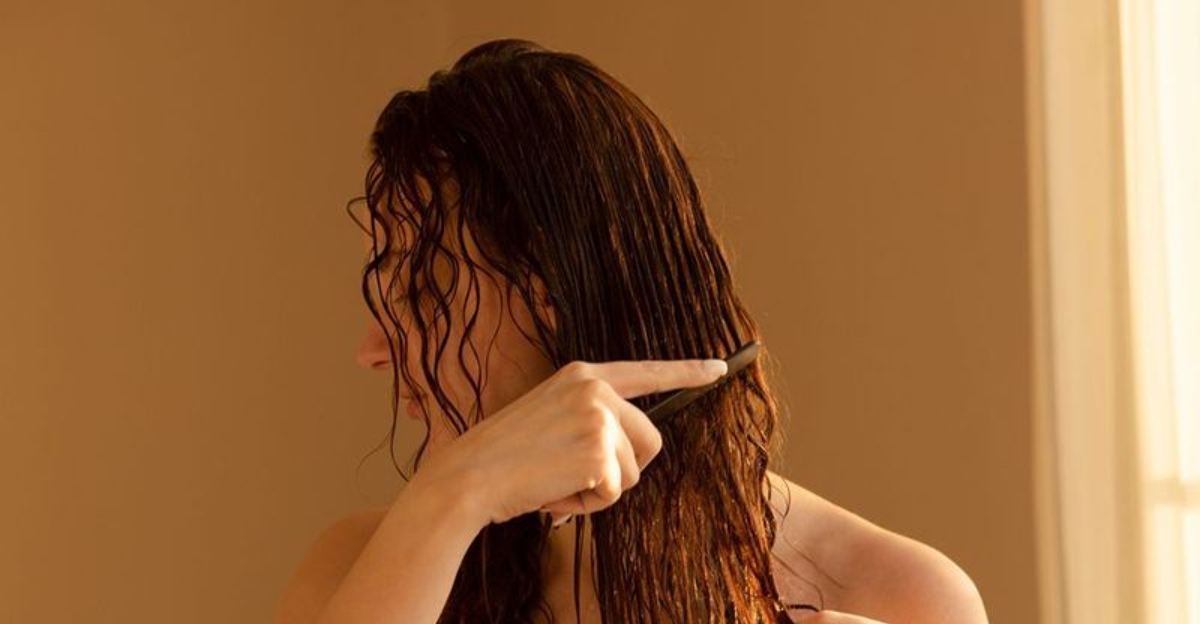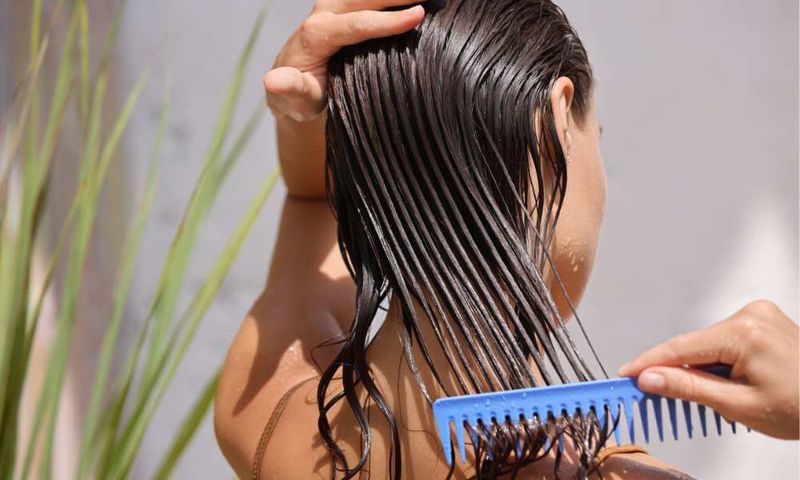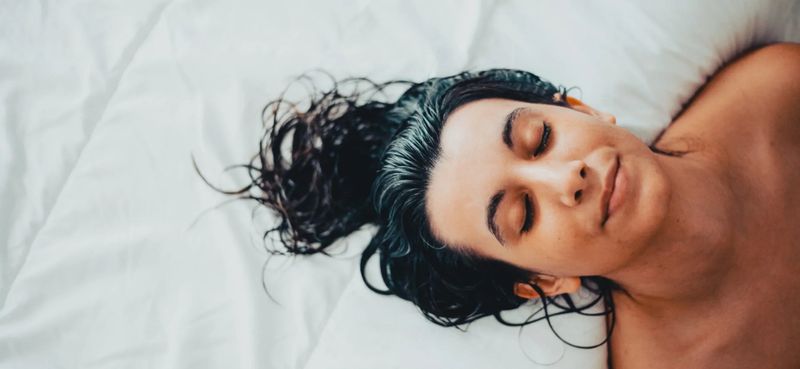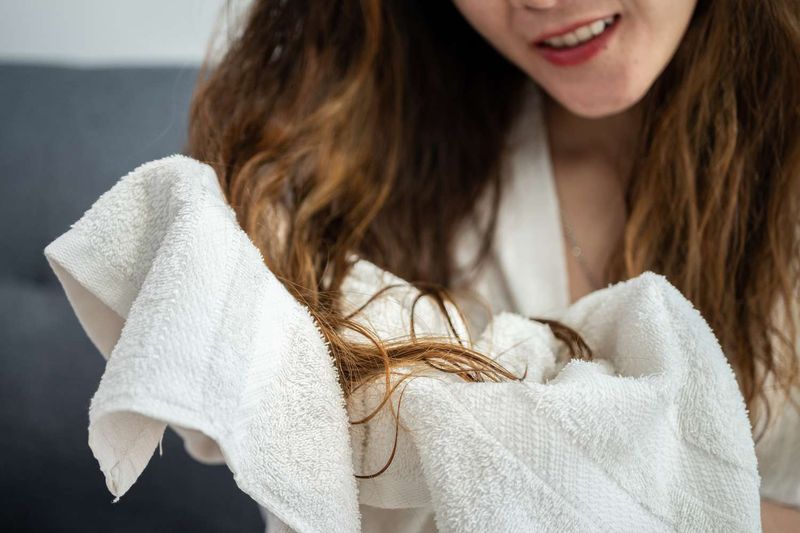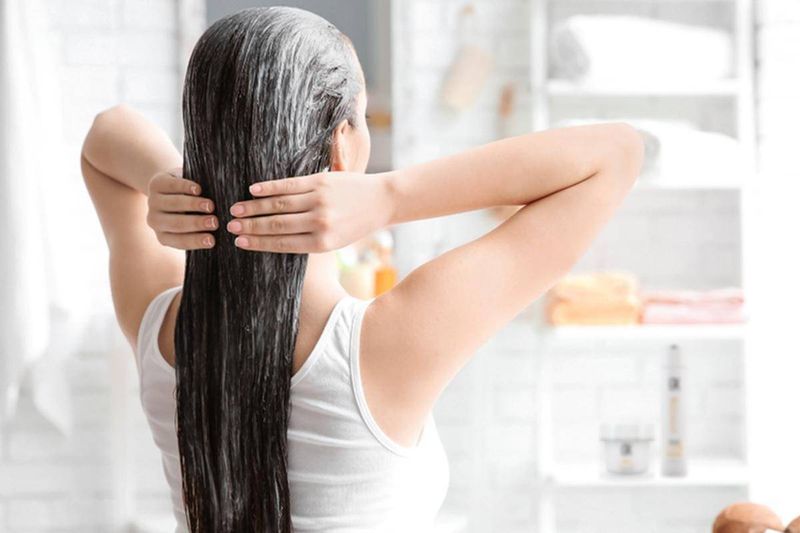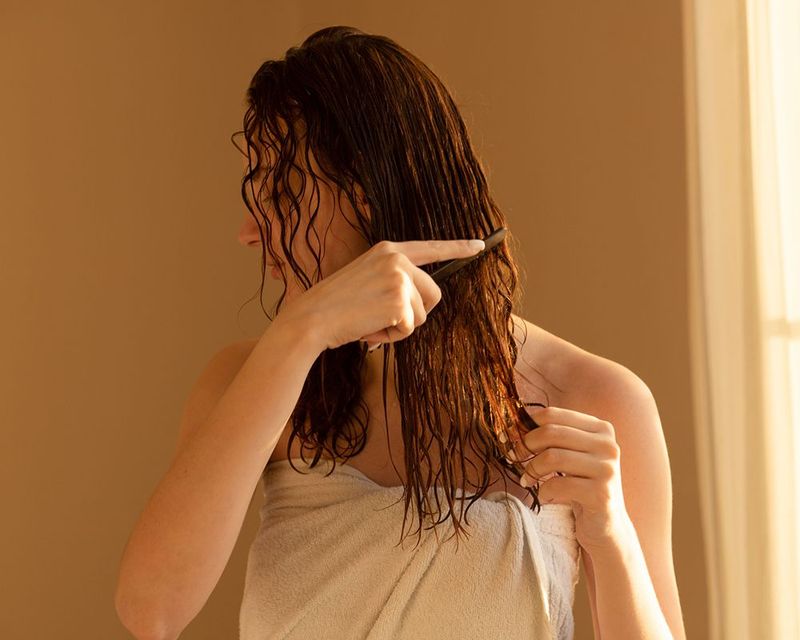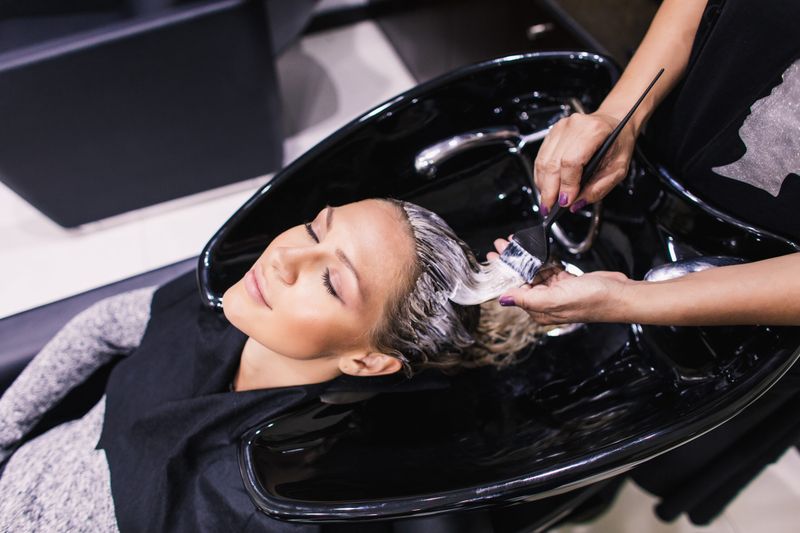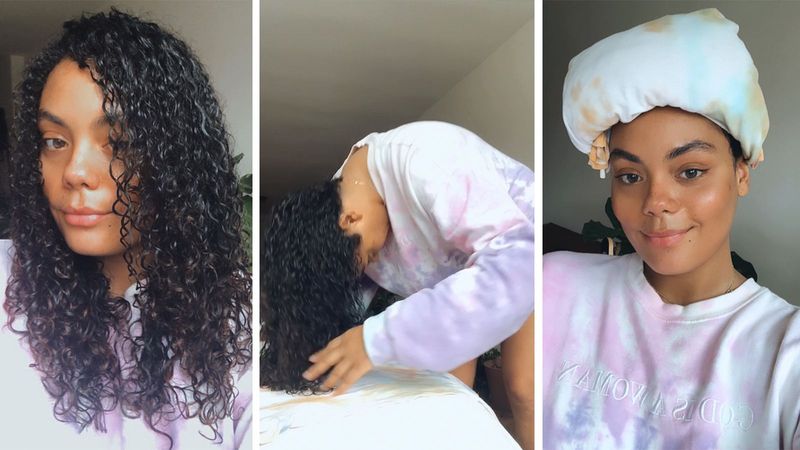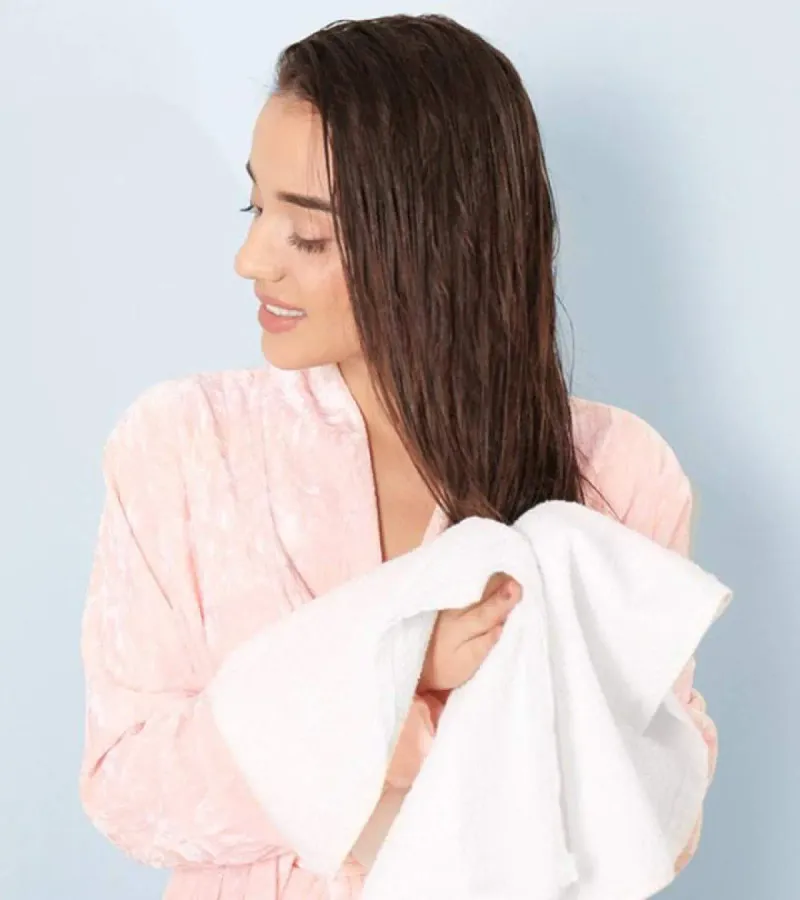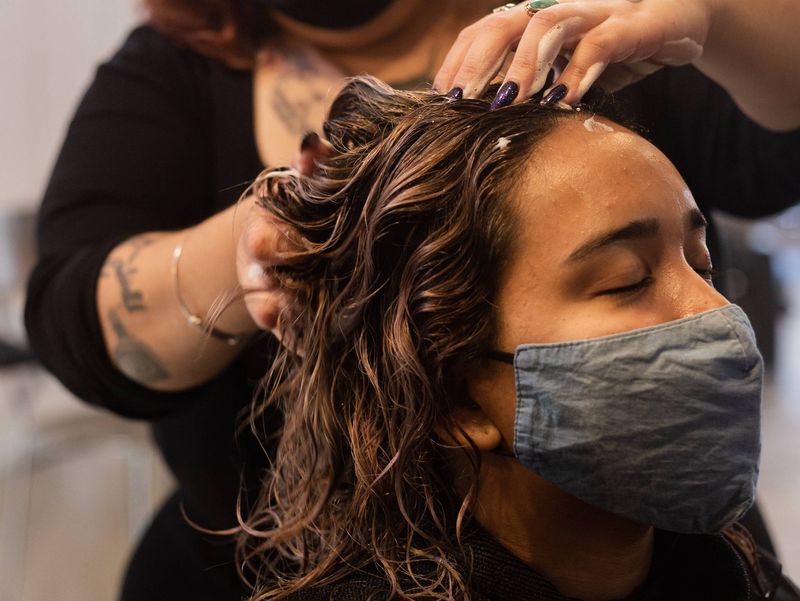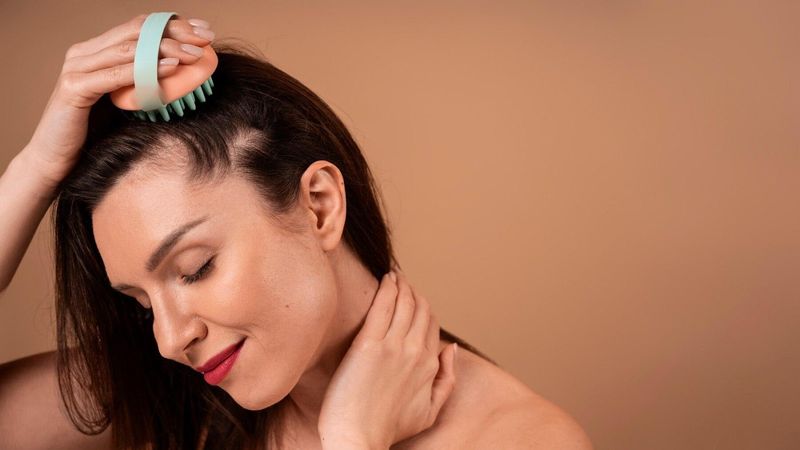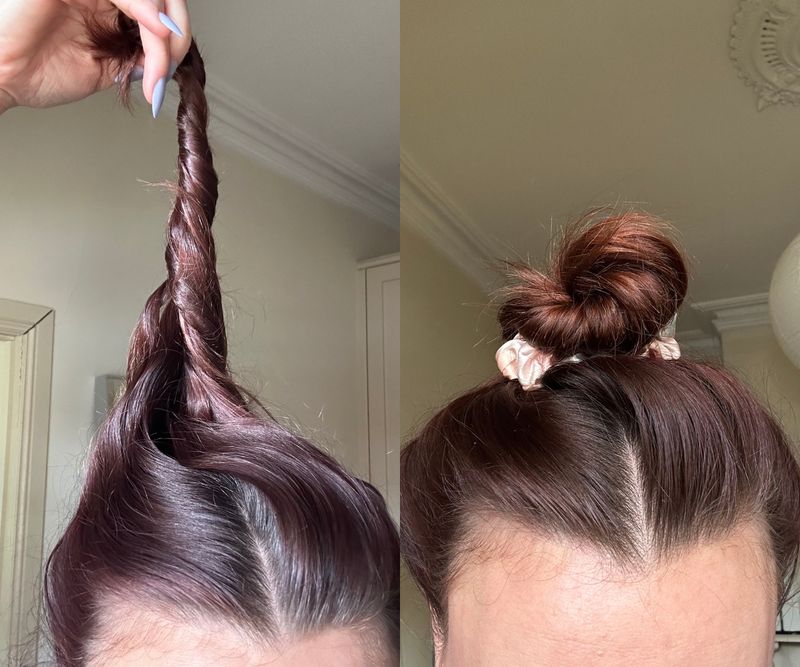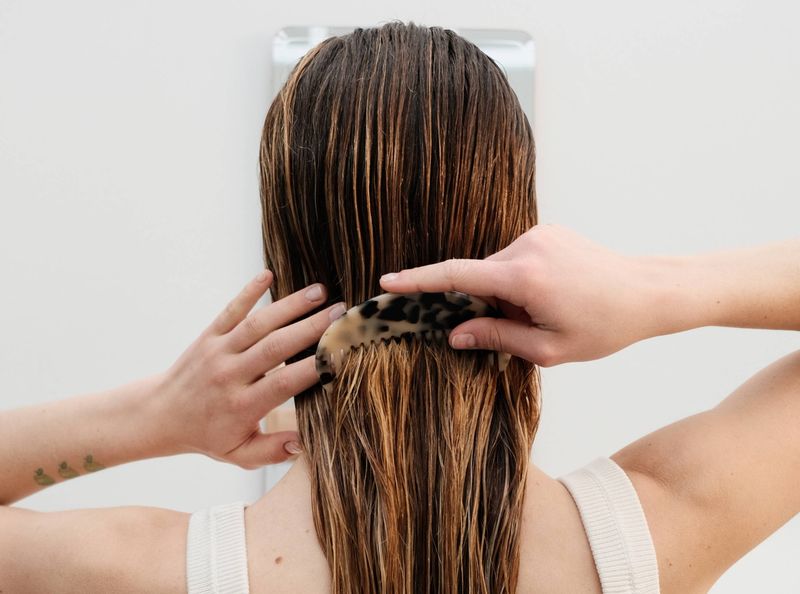Taking care of damp hair is more important than most people realize. When wet, your hair is at its most fragile state and needs special attention to prevent damage. Learning the right techniques can make a huge difference in the health and appearance of your locks.
1. Brushing Damp Hair Properly
Start from the ends and work your way up when brushing wet strands. This technique prevents breakage by gently detangling small sections first.
Always use a wide-tooth comb or brush specifically designed for wet hair.
2. Why Cotton Towels Damage Hair
Regular cotton towels create friction that roughens the hair cuticle and causes frizz. The rough texture can snag wet strands, leading to breakage.
Microfiber or soft t-shirt material absorbs moisture without the damage.
Related: -7 Straight-Hair Problems No One Talks About And 8 Easy Fixes That Shine
3. Heat Styling Dangers
Applying heat to damp locks causes water inside hair shafts to boil. This steam explosion can create bubbles in the hair shaft, leaving permanent damage.
Patience pays off—wait until hair is 80-90% dry before styling.
4. Sleeping With Wet Hair
Nighttime tossing creates friction against your pillow, causing tangles and breakage. Damp hair is more prone to bacterial growth, potentially leading to scalp issues.
If unavoidable, loosely braid damp hair before bed.
5. Hair Elasticity When Wet
Wet strands can stretch up to 50% more than dry hair without breaking. However, once stretched beyond this point, they won’t return to normal.
Handle with extra care to preserve your hair’s natural bounce.
6. Leave-in Conditioner Benefits
Applied to damp hair, leave-in products create a protective barrier against environmental damage. They lock in moisture while detangling stubborn knots.
Choose formulas with natural oils for added nourishment without heaviness.
7. Air-Drying Techniques
Gentle scrunching with a microfiber towel enhances natural wave patterns. For straighter styles, comb through and allow hair to hang freely.
Avoid touching constantly—this disrupts the cuticle and creates frizz.
8. Protein Treatments Timing
Applying protein treatments to damp hair maximizes absorption into the hair shaft. The moisture helps proteins penetrate deeper, strengthening from within.
Most effective when used after shampooing and before conditioning.
9. Chlorine and Salt Water Effects
Swimming leaves behind minerals that weaken wet hair structure. These deposits can cause discoloration and brittleness if not properly removed.
Rinse immediately with fresh water, then use a clarifying shampoo to prevent damage.
10. UV Protection Importance
Damp hair is more vulnerable to sun damage than dry strands. Water droplets can act like magnifying glasses, intensifying UV rays.
Apply UV-protective products specifically formulated for wet hair before sun exposure.
11. Plopping Curly Hair
This technique involves wrapping damp curls in a t-shirt or microfiber towel. The fabric absorbs excess moisture while maintaining curl pattern and reducing frizz.
Leave wrapped for 10-20 minutes before air-drying or diffusing.
12. Cold Water Rinse Benefits
Finishing your wash routine with cool water seals the cuticle layer. This simple step increases shine and reduces frizz by smoothing the hair’s outer surface.
Just 10-15 seconds of cold water makes a noticeable difference.
13. Avoiding Hair Breakage
Never wrap soaking wet hair in a tight towel turban. The weight pulls on fragile roots and can cause hairline breakage.
Instead, gently squeeze out excess moisture before loosely wrapping.
14. Silk Pillowcase Advantages
Silk creates less friction than cotton when damp hair moves across it. This reduces morning tangles and breakage while preserving hairstyles overnight.
The smooth surface also helps prevent frizz and split ends.
15. Drying Techniques For Different Textures
Straight hair benefits from paddle brushing while drying. Curly types should use diffuser attachments or microfiber towels.
Coarse textures need gentle squeezing rather than rubbing to prevent frizz.
16. Scalp Care While Damp
Massage your scalp gently while hair is damp to improve circulation. This stimulates follicles and distributes natural oils.
Avoid harsh scratching—use fingerpads rather than nails to prevent irritation.
17. Protecting Color-Treated Hair
Color molecules escape more easily from wet, freshly dyed strands. Wait 48-72 hours after coloring before washing to allow pigment to fully set.
Use lukewarm water and color-safe products to extend vibrancy.
18. Overnight Drying Alternatives
Braiding damp hair creates heatless waves by morning. Loose buns positioned at different heights produce various curl patterns.
Secure with soft scrunchies rather than elastic bands to prevent dent marks.
19. Products To Apply Before Drying
Layer products in order of weight—lightest to heaviest. Start with water-based leave-ins, followed by oils or creams.
Apply heat protectants last, even if air-drying, to shield against environmental damage.

